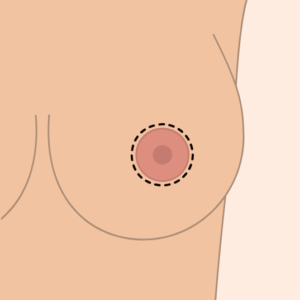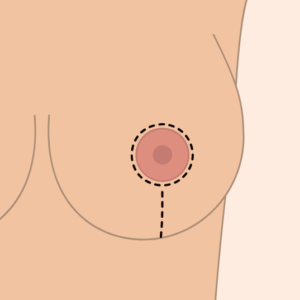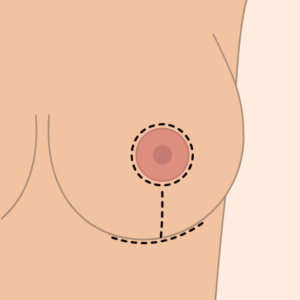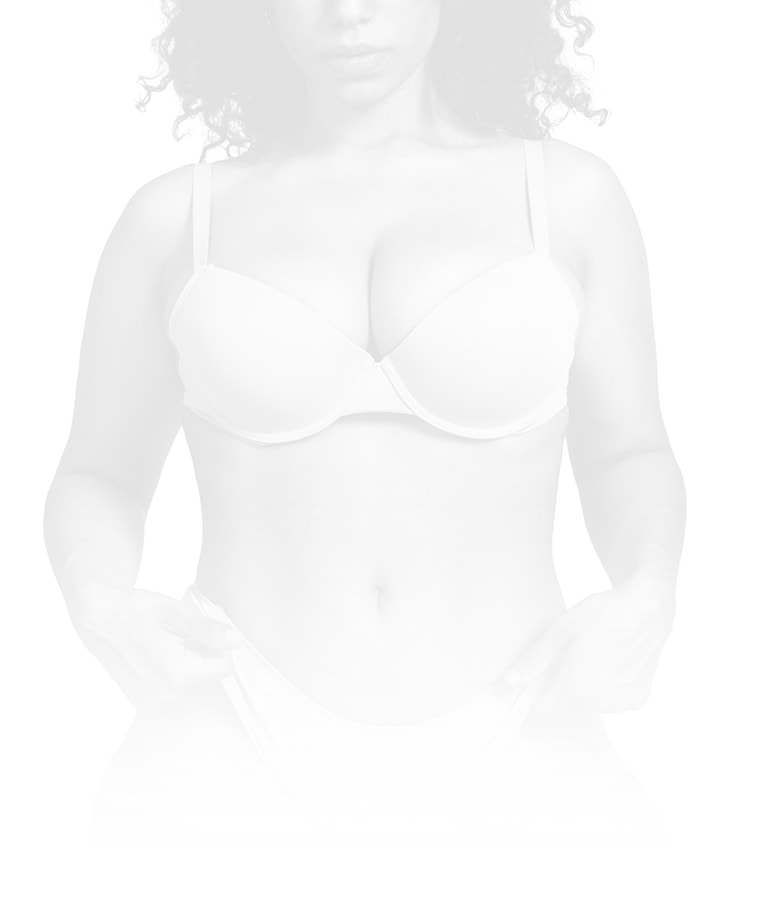Home|Breast Procedures|Breast Reduction
Quick Facts About Breast Reduction:
- Procedure Length: 2-4 hours
- Anesthesia: General anesthesia
- Recovery: Normal activities can be resumed in 5-7 days; exercise restrictions are lifted after 3-6 weeks
- Principal Benefits: Relief from the physical and emotional discomfort associated with large, heavy breasts
What is Breast Reduction Surgery?
Breast reduction surgery, also called a reduction mammoplasty or reduction mammaplasty, is the treatment of choice for women experiencing symptoms related to their large breast size. By removing significant amounts of breast tissue as well as contouring and elevating the remaining tissue, the procedure can effectively and successfully alleviate the associated symptoms and yield smaller, rejuvenated and more comfortable breasts. Not entirely surprising, our happiest patients are those who have undergone this procedure—even more than for breast augmentation. In well over thirty years of practice in Arizona, Steven H. Turkeltaub, MD—our skilled breast surgeon—has not had a patient indicate that they regretted their decision. In fact, many have expressed that they should have pursued the procedure years ago and would have avoided all the untoward issues associated with their large breasts.
- What Are the Benefits of Breast Reduction?
- Are You a Good Candidate for a Breast Reduction?
- Insurance or Private Pay?
- What Are the Different Techniques for a Breast Reduction?
- What Can I Expect From the Breast Reduction Procedure?
- What Can I Expect From Recovery After Breast Reduction?
- Will I Have Scars After Breast Reduction?
- Can I Get a Non-Surgical Breast Reduction?
- How Much Does Breast Reduction Cost?
- Breast Reduction Before-and-After Photos
- Breast Reduction Patient Testimonial Videos
- Frequently Asked Questions
- Additional Information About Breast Reduction
What Are the Benefits of Breast Reduction?
By substantially decreasing the size of the breasts to be more proportionate with a patient’s body, breast reduction surgery offers several potential benefits, including:
- Relief of back, neck and shoulder pain associated with large, heavy and usually droopy breasts
- Lighter, more youthful appearing breasts
- Far greater comfort when exercising or engaging in vigorous physical activity
- Less unwanted attention when engaging in vigorous physical activities
- Greater ease when shopping for bras and clothes
- Improved posture
- Relief from skin irritation around the bra straps and chafing beneath the breasts
- Elevated self-confidence
- Less unsolicited attention due to smaller breasts
Virtually all of Dr. Turkeltaub’s breast reduction patients report an improved overall quality of life after the procedure. With decades of experience as a breast surgeon, he understands how life-changing it can be to feel comfortable and confident in one’s own skin, and he is dedicated to ensuring each of his patients achieves the best possible result.
Are You a Good Candidate for a Breast Reduction?
Disproportionately enlarged breasts, also known as macromastia, can be quite debilitating both physically and emotionally. Commonly associated symptoms and findings include neck, back, and shoulder pain, skin irritation, rashes, infections, compensatory postural changes and grooving of the shoulders from bra straps.
Women with such large breasts are frequently faced with real challenges and restrictions including in the types and amount of physical activities that they can engage in due to the associated discomfort. Being able to find comfortable, properly fitting bras that provide well needed support as well as clothes that are attractive, complementary and stylish can be daunting tasks.
Women elect to undergo breast reduction surgery in order to alleviate symptoms or address issues that are directly affected by their enlarged breast size. The most common reasons include:
- Breasts that are disproportionately too large
- Neck, back and shoulder pain that are secondary to the weight and traction effect of the heavy breasts
- Large, pendulous breasts that hang down over the abdomen
- Irritation, pain and indentations of the shoulders caused by pressure from the bra straps
- Chronic rashes or infections between the drooping breasts and underlying skin
- One breast is significantly larger than the other
- Limitations in the ability to engage in sports and other physical activities due to the associated breast pain
- Feelings of self-consciousness and low self-esteem that are often exacerbated by jokes and unwarranted attention to one’s breasts
- Difficulty finding bras that are comfortable, supportive and which can reduce symptoms related to the weight of the breasts
- Limitations in finding clothes that will fit or that one would like to wear
Insurance or Private Pay?
Having health insurance does not guarantee that you have coverage for a breast reduction because many companies have made it an exclusion in their policies. In order to determine whether or not you may be eligible for insurance coverage, your specific policy must be checked. Even when the benefits are offered, however, most all plans mandate that you must meet certain specific criteria in order to obtain approval for insurance coverage for your surgery. Dr. Turkeltaub and his staff will assist you in trying to obtain insurance pre-authorization.
The particular criteria that must be met do vary among the different insurance companies and even between different policies. Some of the more common ones include:
- Exceeding a minimum specified weight of breast tissue that must be removed from each breast. The exact amount is frequently determined by an index that relates your weight and height.
- Symptoms including neck, back and shoulder pain; skin rashes or infections; grooving of your shoulders; headaches
- Duration of the symptoms
- Failure to respond to pain medications, nerve blocks, etc.
- Failure to respond positively to a course of physical therapy that may need to be at least three months in duration
- Documentation of symptoms and a strong recommendation for surgery by your primary care doctor
- Recommendations for breast reduction surgery rendered by other medical specialists including orthopedic surgeons, neurologists, neurosurgeons and chiropractors
- Meeting several of the above as well as not exceeding a certain body-mass index (BMI)—which is a particular weight for one’s height
If you do not have insurance coverage or have been denied benefits for a breast reduction, you still have the option of proceeding with the surgery by paying on your own. We offer special package pricing in conjunction with the outpatient center and the anesthesiologist that can make your breast reduction procedure affordable … and a reality!
What Are the Different Techniques for a Breast Reduction?
Breast reduction surgery involves decreasing the size of the breasts by removing excess breast tissue and skin along with recontouring and elevating the remaining tissue. The nipple-areola complexes, which are usually enlarged and below their appropriate locations, are reduced to a more proportionate size as well as elevated to a more ideal, natural position while still remaining attached to the breast tissue. This technique allows for the possibility of being able to breastfeed in the future (when relevant) and for preserving some sensation and sensuality of the nipple-areola complexes.
A variation of this procedure is where the nipple-areola complexes are physically detached from the underlying tissue and then replaced as “skin grafts” in the appropriate locations after the reduction and recontouring are accomplished. This technique, which is called the “free nipple graft” approach, does offer some significant advantages to select women. A few indications for its usage include massively enlarged or elongated breasts, women who are heavy smokers, patients who are at higher risk medically, women who have or are at risk for impairment of the blood flow within the breasts and those who want to be extremely small. Disadvantages include loss of sensation and sensuality, inability to breastfeed, a variable amount of depigmentation of the areola and lack of any nipple projection.
The most common incisions used in a breast reduction are in the shape of an inverted-T or anchor and extend from around the nipple, down to the crease at the bottom of the breast and then along this crease. With time, complete maturation of the tissues and when performed with meticulous technique, these scars can become relatively inconspicuous.
There are other less common configurations for incisions, often with the intended goal being to minimize the overall scar length. Unfortunately, these approaches often limit the ability to precisely reduce and sculpt the remaining tissues which result in less than desirable breast shapes; create abnormal or asymmetrical nipple positioning; produce scars that can extend below the breast fold and be visible when wearing more abbreviated clothing; and increase the likelihood that a follow-up corrective procedure would need to be performed. In Dr. Turkeltaub’s opinion, the sacrifices you would make just to have shorter incisions are not worth it.
Liposuction breast reduction is a niche procedure that utilizes liposuction in order to reduce the breast size. Because liposuction does not remove glandular breast tissue, the only tissue that is being removed is fat which, therefore, limits its applicability to select few women. Furthermore, because this technique involves no skin resection that would otherwise be necessary to recontour and elevate the breasts, droopy breasts will remain that way. The distinct advantage of this technique is that relatively small breast reductions in women with minimal or no drooping can be accomplished employing a few short incisions (1/4 to 3/8 inch) through which cannulas are inserted in order to facilitate the liposuctioning.

“Donut” Incision

“Lollipop” Incision

“Anchor” Incision
What Can I Expect From the Breast Reduction Procedure?
Breast reduction surgery is usually done under general anesthesia as an outpatient procedure. Depending on several factors, the procedure usually takes between two to four hours. In order to facilitate obtaining the desired size, shape and greater symmetry, Dr. Turkeltaub will carefully assess you from a variety of angles and positions. He also uses a meticulous closure technique that provides you the opportunity to heal with the best possible scars.
Breast reductions are commonly performed in conjunction with many other cosmetic procedures; for example, as part of a “Mommy Makeover” with tummy tucks, liposuction and facial cosmetic surgery. The advantages include more extensive and cost effective improvements with less total downtime and time off of work or school.
What Can I Expect From Recovery After Breast Reduction?
A bulky dressing is placed following surgery that provides some compression and comfort for 2–3 days. Openings are placed in the dressings to allow you to check the color of your areolas around every four hours to make sure they are getting an adequate blood supply and the blood flow out is good as well. Often there may be a small amount of bleeding or drainage which is of no concern.
During your first postoperative visit, you are placed in a sports type bra which you are to wear day and night for at least 1 week. After that, it is highly recommended that you wear a supportive bra on a regular basis so as to help maintain your breast shape and slow down the rate of drooping that will occur over time. An underwire bra can subsequently be worn if you desire but the timing of this would depend on several factors. For more explicit information on this, you can read Dr. Turkeltaub’s blog post on wearing an underwire bra after breast reduction. If you have drains (which are infrequently used) or any external sutures, these are removed at around 1 week.
Many women expect this to be a painful procedure and are surprised to learn that the opposite is true. The discomfort level is quite tolerable and easily controlled with pain medication. In fact, many of Dr. Turkeltaub’s patients take little or no pain medication and indicate an immediate improvement or resolution of their symptoms resulting from the reduction.
Your breasts initially will be moderately swollen, firm and may appear larger than they ultimately will be. It can take several weeks to a few months for a majority of this swelling to disappear. You can resume virtually all sports, unrestricted aerobic activity or heavy lifting at around three to four weeks. Most of our patients return to work or school within five to seven days.
Will I Have Scars After Breast Reduction?
Breast reduction surgery is most commonly performed using an anchor-shaped incision (also called an inverted “T” incision) which extends around the outer edge of the areola, vertically down the breast and then horizontally along the crease at the bottom of the breast (inframammary fold). There are a variety of elements that will impact the ultimate visibility of this scar, with the most notable being one’s natural healing response and unique genetic makeup. Other more controllable factors include the incision closure technique utilized, adherence to postoperative advice including related to certain activities and the employment of scar mitigation products.
Throughout his career, it has been Dr. Turkeltaub’s experience that the vast majority of breast reduction patients have no issues with the final appearance of their scars—and most find that all incision lines can be hidden underneath numerous types of bras, bathing suits and blouses.

Can I Get a Non-Surgical Breast Reduction?
In general, the only way to reliably reduce the size and weight of the breasts is through breast reduction surgery. Some patients may see minor improvements through weight loss. However, non-surgical techniques typically may only be able to reduce fatty tissues in some individuals.
Furthermore, non-surgical modalities are typically unable to address excess skin and glandular tissues which contribute to a droopy, pendulous breast appearance even after successful weight loss.
Ultimately, breast reduction surgery offers the most consistent, comprehensive and predictable results for those seeking lighter, smaller, perkier and more proportionate breasts.
How Much Does Breast Reduction Cost?
Pricing for breast reduction surgery is highly variable based on factors that include the plastic surgeon’s fee, expenses related to anesthesia and charges for the operating facility that can be an outpatient surgery center or hospital.
The following elements can also influence the overall cost of the procedure:
- The extent of tissue removal, recontouring and lifting required
- The plastic surgeon’s level of training, skill and experience—as well as his or her personal surgical preferences
- Where the practice and/or treatment facility are geographically located
- Any medications that might be needed before and/or following surgery
- Charges for any required pathology or lab work
- Whether or not the procedure is covered by insurance, and if so, the specific terms of the particular insurance plan
For a personalized breast reduction price quote, we invite you to contact our office to schedule a consultation with Dr. Turkeltaub. After extensively reviewing your unique needs and formulating a customized treatment plan, he can provide you with an accurate cost estimate and breakdown of all associated fees if there is no insurance coverage.
If you have insurance that may offer coverage for breast reduction surgery, a member of our staff can also assist you in determining whether or not there truly is coverage and, if so, whether your insurance company will authorize your procedure. Your financial responsibilities can also be determined. We can also assist you with breast surgery financing options if you are interested.
Breast Reduction Before and After Photos
The vast majority of women who have had breast reduction surgery have been extremely happy with their results and in choosing this course of action. They noted that the procedure resolved most, if not all, of their symptoms. In fact, they are among our happiest, most satisfied and appreciative patients.
Due to social media policies, the following images have been censored. Please click on the image below to view the image.
Breast Reduction Patient Testimonial Videos
Frequently Asked Questions
My breasts are very large and cause neck, back and shoulder pain. Will a breast reduction help resolve my symptoms?
What level of discomfort can I expect following breast reduction surgery?
Will a breast reduction be covered by my insurance plan or will it be considered to be cosmetic?
Are there any age restrictions for a breast reduction?
For women in their seventies and eighties, as long as you are in good health, have received medical clearance, are experiencing debilitating symptoms and the benefits would outweigh the risks, surgery can surely be considered.
Additional Information About Breast Reduction from Dr. Turkeltaub
Read more about breast reduction from Dr. Turkeltaub’s breast surgery blog.
Learn More on How a Breast Reduction Can Benefit You
There are many important reasons to contemplate undergoing a breast reduction procedure if you are bothered by large breasts. In some cases, your breast reduction procedure can even be combined with a breast lift. You can contact our plastic surgery center to learn more about the benefits of a breast reduction.
Dr. Steven H. Turkeltaub is an experienced plastic surgeon who performs a large number of breast reductions, helping women who are affected by these issues associated with large breasts.
